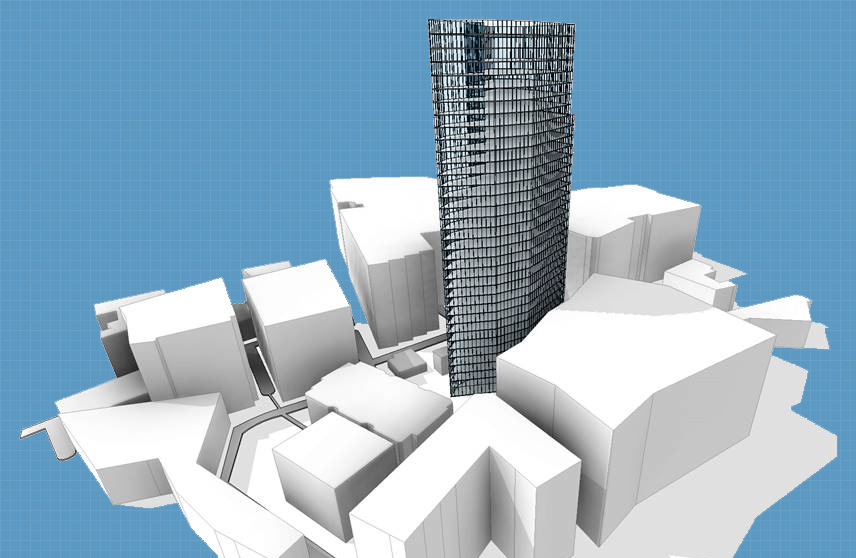
The Smart New Technology That’s Saving Builders 15 Percent on Design Costs
In construction, doing an early stage feasibility assessment is—of course—an absolutely critical first step. That’s why it’s so surprising that it’s often still such a manual, time-consuming process. Compared to how things are done in other industries, it seems of a different era.
During an early stage feasibility assessment, a builder will typically engage an architectural office to develop a few different building plan options. After that, the builder will choose one or two to develop in more detail.
Often, those designs will fail to pass muster with an MEP engineer when one is eventually brought in to run their calculations. At this point, it’s rinse and repeat. The entire process has to be done over again, adding time and cost.
Think about that for a second. We’re talking about a process that may result in the building of incredibly large, complex structures with a massive amount of impact on the environment and the communities around it, yet it’s being carried out in highly manual, inefficient ways with very little verifiable data to show for it afterward.
The entire process is, in other words, flawed and sorely in need of an update.
Inspired by that, we at Enstoa set out to see if automation could remove some of architecture’s most common inefficiencies. We started experimenting at creating more efficient workflows that eliminate tedious, budget-intensive work.

A building information model generated by our feasibility assessment tool
One of those workflows resulted in a tool which uses generative design to produce thousands of possible building designs based on the client’s requirements, such as the size of the plot, boundaries, etc. The design results can then be filtered using a wide range of parameters from the building’s number of floors to its return on investment.
Generative design, of course, is already widely used by leading manufacturers to optimize designs for different materials and manufacturing methods.
The biggest advantage of generative design is that it dramatically cuts the time it takes to create a design that matches the client’s criteria. It can generate thousands of detailed conforming designs in just minutes. It can also let the user know which designs are most efficient and why, based on hard data.
This new feasibility study tool, for instance, allows builders to quickly understand the viability of a site before engaging other parties, while also allowing them to explore the potential of multiple sites simultaneously.
This approach is infinitely better for everyone involved. Every possible solution is investigated. All tangible outputs are visible.
Developers love this approach because their most expensive decisions become more data-driven and less risky. Many architects love it because they can focus more on the creative and analytical side of what they do. Engineers and contractors appreciate the precision of the process and all the data that becomes available as a result.
It should be noted that communities benefit from this process too because the resulting design has, in a way, been stress tested against thousands of others. The result—at least in theory—is a design that’s safer and more in harmony with its surroundings.
In this process, architects still use the BIM environment to tackle the really detailed provisioning work and commercial viability calculations. The beauty is that all the trial and error that typically comes before that part is eliminated—as well as the cost that comes with it.
(Oh, did we mention this approach shaves off about fifteen percent of the total cost of design?)
By taking a more objective, tech-enabled approach to early stage feasibility, designers are free to concentrate on more complex issues. But they’d better hurry. A growing number of tech companies like Google and Amazon are seeking their next big disruption and are tinkering with new ways to transform the construction industry to that end. In other words, some of construction’s more tech-averse players may soon find themselves competing with true masters of innovation. As more and more non-industry players try to elbow in on construction, the pressure to innovate within the industry will hopefully grow.
We say ‘hopefully’ because we truly believe that generative design technology holds the promise of taking the enormous talents of builders and architects and unleashing them even further. May that day come very soon.
To learn more about Enstoa’s generative design offerings and how they can help your business, contact us today.
In construction, doing an early stage feasibility assessment is—of course—an absolutely critical first step. That’s why it’s so surprising that it’s often still such a manual, time-consuming process. Compared to how things are done in other industries, it seems of a different era.
During an early stage feasibility assessment, a builder will typically engage an architectural office to develop a few different building plan options. After that, the builder will choose one or two to develop in more detail.
Often, those designs will fail to pass muster with an MEP engineer when one is eventually brought in to run their calculations. At this point, it’s rinse and repeat. The entire process has to be done over again, adding time and cost.
Think about that for a second. We’re talking about a process that may result in the building of incredibly large, complex structures with a massive amount of impact on the environment and the communities around it, yet it’s being carried out in highly manual, inefficient ways with very little verifiable data to show for it afterward.
The entire process is, in other words, flawed and sorely in need of an update.
Inspired by that, we at Enstoa set out to see if automation could remove some of architecture’s most common inefficiencies. We started experimenting at creating more efficient workflows that eliminate tedious, budget-intensive work.

A building information model generated by our feasibility assessment tool
One of those workflows resulted in a tool which uses generative design to produce thousands of possible building designs based on the client’s requirements, such as the size of the plot, boundaries, etc. The design results can then be filtered using a wide range of parameters from the building’s number of floors to its return on investment.
Generative design, of course, is already widely used by leading manufacturers to optimize designs for different materials and manufacturing methods.
The biggest advantage of generative design is that it dramatically cuts the time it takes to create a design that matches the client’s criteria. It can generate thousands of detailed conforming designs in just minutes. It can also let the user know which designs are most efficient and why, based on hard data.
This new feasibility study tool, for instance, allows builders to quickly understand the viability of a site before engaging other parties, while also allowing them to explore the potential of multiple sites simultaneously.
This approach is infinitely better for everyone involved. Every possible solution is investigated. All tangible outputs are visible.
Developers love this approach because their most expensive decisions become more data-driven and less risky. Many architects love it because they can focus more on the creative and analytical side of what they do. Engineers and contractors appreciate the precision of the process and all the data that becomes available as a result.
It should be noted that communities benefit from this process too because the resulting design has, in a way, been stress tested against thousands of others. The result—at least in theory—is a design that’s safer and more in harmony with its surroundings.
In this process, architects still use the BIM environment to tackle the really detailed provisioning work and commercial viability calculations. The beauty is that all the trial and error that typically comes before that part is eliminated—as well as the cost that comes with it.
(Oh, did we mention this approach shaves off about fifteen percent of the total cost of design?)
By taking a more objective, tech-enabled approach to early stage feasibility, designers are free to concentrate on more complex issues. But they’d better hurry. A growing number of tech companies like Google and Amazon are seeking their next big disruption and are tinkering with new ways to transform the construction industry to that end. In other words, some of construction’s more tech-averse players may soon find themselves competing with true masters of innovation. As more and more non-industry players try to elbow in on construction, the pressure to innovate within the industry will hopefully grow.
We say ‘hopefully’ because we truly believe that generative design technology holds the promise of taking the enormous talents of builders and architects and unleashing them even further. May that day come very soon.
To learn more about Enstoa’s generative design offerings and how they can help your business, contact us today.




